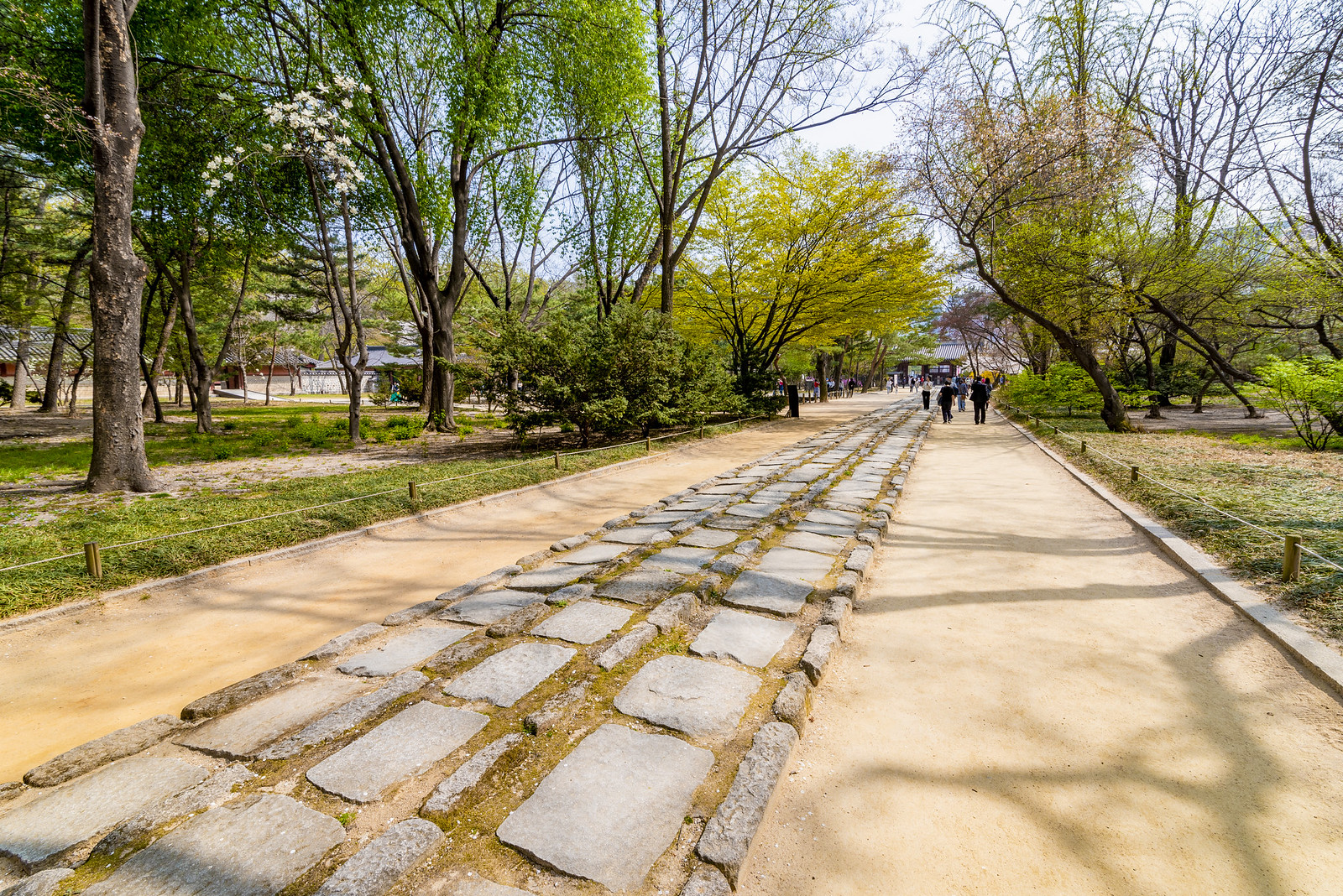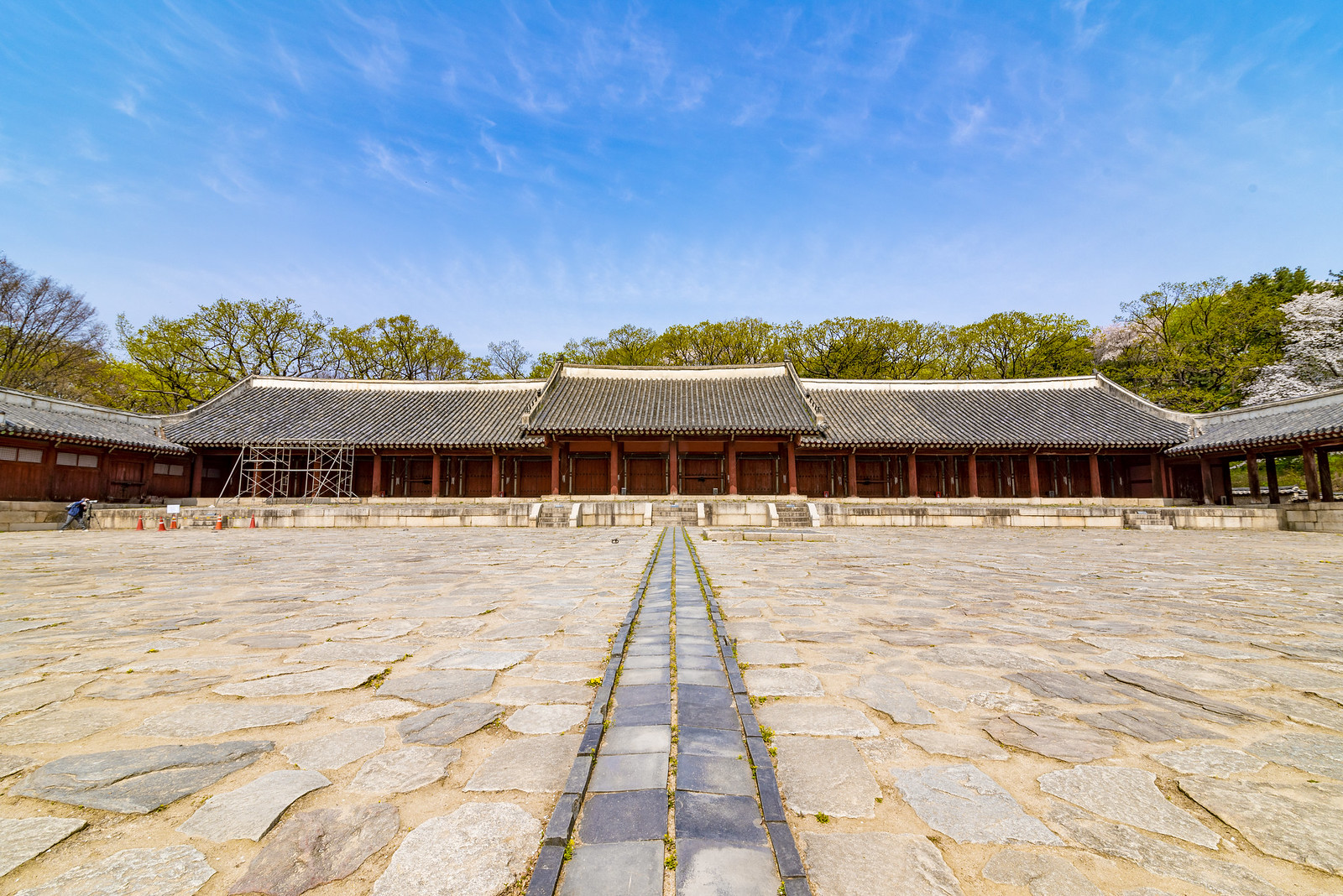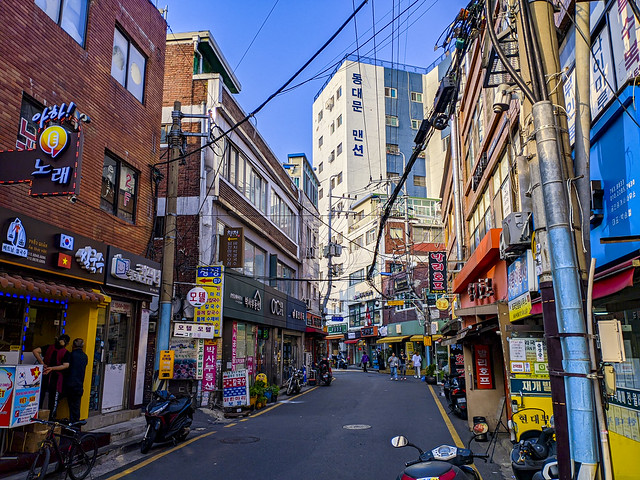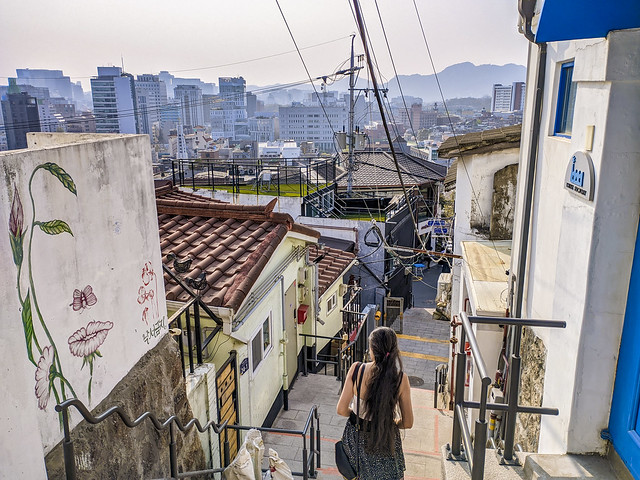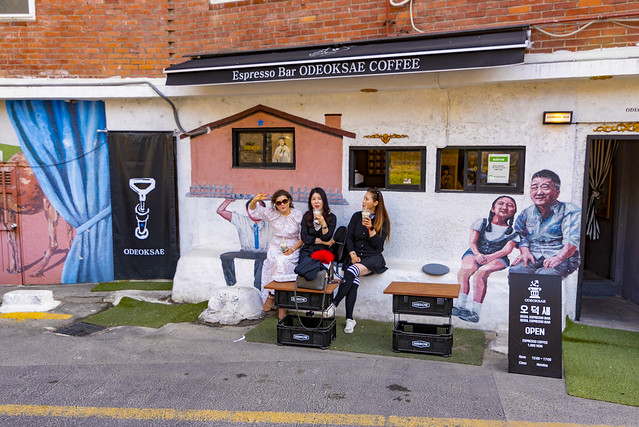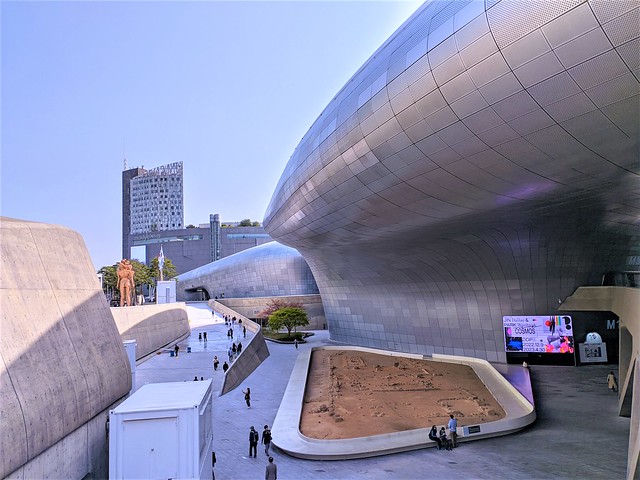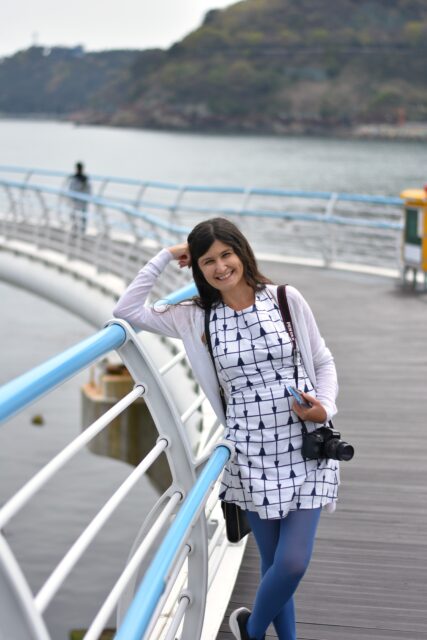Quick heads‑up, fellow travelers: Hit the Road Ket contains some affiliate links. Book through them and I earn a small commission at no extra cost to you – fueling my caffeine fix and future travels! For more details, see my Disclosures.
With 2 days in Seoul you can explore more parts of the city and learn more about its history. You can switch some of the places in this itinerary, if you are interested in other things, but overall, this is going to make a nice selection of the sites to visit.
Day 2 Highlights: Jongmyo Shrine, Changdeokgung, Changgyeoggung, Ihwa mural village, Seoul city wall walk, Dongdaemun (in case you only have 2 days, add Hongdae on day 1 evening and Namsan Tower on day 2 evening)
If you are able to walk, you won’t need any transport throughout the day, you can walk among the sites. Actually that is preferable, as you will be seeing many things around. Depending on where your hotel is, you may need to take transport to Jongmyo in the morning and from Dongdaemun or Gwangjang in the evening (use Naver maps for directions).
For the purposes of this itinerary it’s best to have 11.30am Changdeokgung Secret Garden tour tickets prebooked (Find out here how to do this). In this case, you can start your sightseeing in Jongmyo shrine. Otherwise, you better show up to Changdeokgung first thing in the day, at 9am to secure your tour tickets in person.
Jongmyo Shrine
price: 1000 won
General admission is only available on weekends and holidays. On any other day you can only visit by joining a guided tour. Free one-hour English language tours are available four times a day (10.00, 12.00, 14.00 and 16.00) on weekdays and Sundays, while only Korean ones on Saturday.
This shrine is a UNESCO world heritage site due to its particular cultural importance. The shrine was constructed in the 14th century (rebuilt in the 17th century after being destroyed during Japanese invasion) to hold the spirit tablets of the kings and queens. The kings visited regularly to give due to their ancestors. Ancestral rites were performed throughout the Joseon reign and continue even to this day (once a year).
Once you enter the shrine area, you will see the raised pathways in the middle, where not even the kings walked. These areas were for the spirits to walk on. You will see the signs asking anyone not to step on this path.
Here is the map of the shrine buildings.
The shrine is currently undergoing a major reconstruction (as far as I know it will go on until 2025). I didn’t find information about this during my research, so we only found out once we entered the grounds. We were unable to visit the two main halls – Jeongjeon and Yeongnyeongjeon, which are actually the highlight of the visit. The first one is the originally built main hall, which houses 49 tablets. The second was built after the main hall was no longer able to hold all tablets and keeps 34 tablets of less worthy royals.
Hyangdaecheong was the building dedicated to storing ritual items. While the main halls are being reconstructed, they have placed 3 tablets here and depicted it, as they are in the main halls, in order for visitors to get an idea.
Another building – Jaegung was used as an area, where the kings and other visitors rested or waited on the days they were holding the rituals.
The shrine is definitely not picturesque or gorgeous, it wasn’t built to be beautiful. However, it’s very interesting to learn about its purpose and cultural importance and wonder where spirits did/do wonder.
Changdeokgung Palace and Secret Garden Tour
From the entrance of the shrine walk towards the Donhwamun gate to enter the palace. After exploring the palace main grounds, join the prebooked 11.30 Secret garden tour, which takes 1.30 hours. Make sure to ask the guide to tell you so that you can get out near the Changgyeonggung entrance, instead of taking you all the way to Donhwamun gate (that way you will have to walk through Changdeokgung again to get to the entrance of the Changgyeonggung and it’s an unnecessary uphill walk.
Changgyeonggung palace
You can access Changgyeonggung from inside Changdeokgung palace (or from the Honghwamun gate, if you aren’t visiting the latter.
Find out more details about visiting Changdeokgung and Changgyeoggung in a dedicated post here.
Daehangno
Exit the palace from the Honghwamun gate and in about 15 minutes you can walk to Hyehwa metro station. Alternatively, you can take a bus.
Here you can have a break at the very famous Hakrim Dabang café or choose a café with a view once you reach Naksan park or Ihwa village (see details in my post dedicated to Seoul cafes).
From Hyehwa station walk in a very nice neighbourhood in the direction of the Naksan park. This area is called Daehangno and it’s the theatre, music and art district of the city. Artists and literature lovers gather around here and it’s very popular among young people. We really liked walking around these streets and peeking at various theatre boards. The area is particularly alive in the late afternoon-evening. You may wish to come back here in the evening to watch a performance.
Actually, while Naksan and Ihwa were on my list, I had no idea that walking to them we would explore this lovely neighborhood. It’s not in many guides, which is quite surprising, given how interesting it is.
Naksan park and walking along Seoul wall
From Daehangno area you will reach Naksan park by climbing up a pretty steep hill. Once you reach the entrance of the park, you go on climbing either by stairs or the walkway to your left. If you are here during the cherry blossom season, choose the walkway, as you will have very nice walk and can take pictures with cherry blossoms. Once you climb on top of the hill, you will see the city wall snaking up and down the mountain.
Parts of Seoul wall can be seen around the city, but the parts at Naksan park and Namsan mountain are some of the most picturesque. Here is the best map of the City wall I found and the link to better resolution image.
Also, if you want to walk along all parts of the City wall, this website has detailed guides on each trail. However, of course, these walks would take a few days and if you have limited time, I would just see it at one or two spots (I highly recommend Naksan park and Namsan, as these are higher sections and have nice views).
You can walk along the City wall southwards where you continue having nice views. it’s a lovely walk and definitely recommended. One of the lovely viewpoints over the city is around here., as well as a bit north of here is a viewpoint, Google just doesn’t allow me to pin exact location. Just continue walking along the wall down to reach Ihwa mural village.
Ihwa mural village
Here is a nice walking map of the Ihwa mural village.
We actually reached it after entering the Naksan park, but you can follow this trail, if you are skipping the park.
However, keep in mind that, some of the art photos you will see in this trail, as well as in older blog posts or videos may not be there anymore (for instance, #6 the fish on the stairs), as they were painted over by locals. However, you will still find some lovely murals all around.
The history of the village is interesting – this was where people, who couldn’t afford to live on the flat land, lived. In the 50s refugees settled here. in 80s and 90s locals moved to more prosperous areas of the city and the village area was completely abandoned. To rectify this, a new art initiative with the participation of over 70 artists in 2006 turned this into a mural village, which attracted a number of tourists and locals.
This area, like Naksan park is very hilly. You will have to do a lot of climbing up and down. However, you can also take a taxi to a higher location and walk downhill.
Here are some of the lovely murals we enjoyed on the way.
Btw. There are a lot of nice cafes with a view in this area. See details in my post dedicated to Seoul cafes.
Once you go downhill, if you aren’t lazy to climb again, you can take another route uphill and then continue walking along the City wall. Alternatively just take easier roads (or a quick bus ride) to Dongdaemun.
Dongdaemun
Dongdaemun area is known for its market, as well as the now famous Design Plaza. Besides, the Heunginjimun gate here is one of the 8 gates to the old city. More southwards, quite close is also the Gwangnuimun gate. There are numerous food places around the area, as well as nice cafes. This is also one of the areas people love for shopping.
The Dongdaemun Design Plaza was built in 2010-2014 by the famous architecture Zaha Hadid, who also built Baku’s Heydar Alyev center. It’s an example of modern architecture with its numerous curves and crannies. Its construction took quite a lot of innovation and new equipment. This building is beloved by many, however, we aren’t really lovers of modern architecture and this one didn’t feel likeable to us. That said we do recognize the huge work put into its construction.
The DDP hosts various art exhibitions, fashion shows and events. Do explore the permanent exhibitions, such as Light Space, as well as temporary ones. It is a popular location and featured in K dramas, such as Love Alarm and Vincenzo.
Don’t forget to check if there are any lights shows going on here during the time you visit. There used to be an LED garden, then in 2022 Seoul at night light show was certainly beautiful. When we visited, there were not such installations or events, however, they may come up with something new again, so do keep an eye.
This area also has Dongdaemun History museum and various art and cultural centers for you to explore.
Gwangjang Market
After Dongdaemun, if you like visiting markets – Gwangjang market is nearby. It works till 11pm, so you can grab your dinner here in the evening after a long day. We never visited this market, as we aren’t generally fans of market areas, but this is one of the most famous markets in the city.
See also:
Suggested 1-day itinerary for visiting Seoul.
Suggested 3-day itinerary for visiting Seoul.

